There are a lot of distractions in the classroom. Studies show that the average child in the classroom has an attention span of around 5 minutes at most before their mind starts to wander. Even adults have trouble focusing on the same task for a long time. Autistic children and others with ADHD have an even harder time focusing. That is why teachers need a wide variety of ideas to keep children on the task at hand.
Classroom fidgets was an idea thought of by people who worked with autistic students to give their brain a distraction when it was needed without taking their focus off of the teacher or central lesson. When the brain is slightly distracted with a repetitive motion such as you get with fidget toys, it can be possible to keep a child’s attention while allowing them to do something with their hands. This gives them a mental break while avoiding coming away from the task altogether.
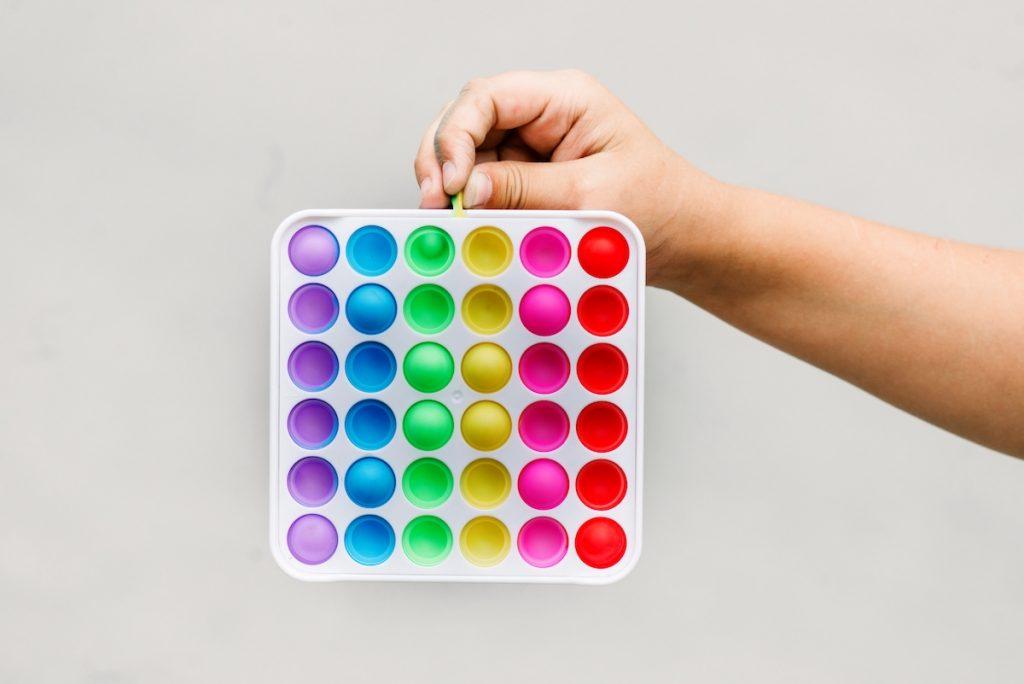
Table of Contents
- Who do they help?
- Movement as a Factor in Learning
- Types of Fidgets You Can Use
- DIY Classroom Fidgets
- Tips and Best Practices for Utilizing Fidgets in the Classroom
- Final Thoughts
Who do they help?
Hey help? Classroom fidgets help both Autistic learners and ADHD students stay on task without being overwhelmed. The autistic brain is overstimulated, so that’s why you see a lot of students with autism and Asperger’s Syndrome immersing themselves in an isolated behavior by themselves or exhibiting withdrawn behaviors.
The ADHD student has a brain that is generally under stimulated, so that type of student is more likely to be trying to overstimulate by seeming a bit too active (thus the term hyperactivity disorder). It is also the paradox that causes the attention deficit aspect of the disorder.
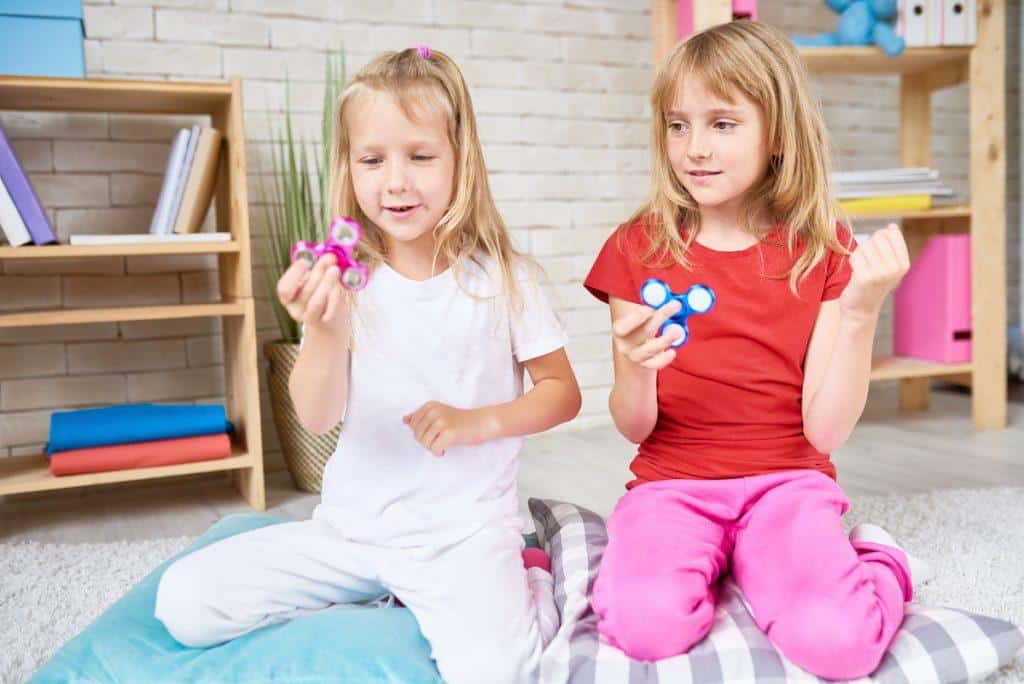
Movement as a Factor in Learning
Studies show that movement as a function of listening can help increase the level of interest and engagement and calm anxieties to increase primary focus ability.
When fidgets are used with this type of student, it helps them divert their attention just slightly and studies show that it actually increases their awareness and involvement in the primary task.
That being said, ADHD and Asperger’s students are not the only ones these gadgets help. They help normally functioning kids, too. Let’s face it, if it’s hard for us as adults to sit through a 50-minute talk with a slightly entertaining speaker, imagine the challenges an energetic youngster faces in trying to focus when they’d rather be outside running and playing!
So fidgets in the classroom are just a handy tool that allows students a non-distracting way to privately distract themselves just enough to get back to the main task without causing a stir in the classroom.
Types of Fidgets You Can Use
Here are 5 types of fidget toys you might consider using in your classroom that provide a way for distracted kids to keep their distractibility at bay while tuning in via a more comfortable way. Following are 15 different fidget toys you can look for when shopping for back-to-school items this year.
1. Kneaded Erasers
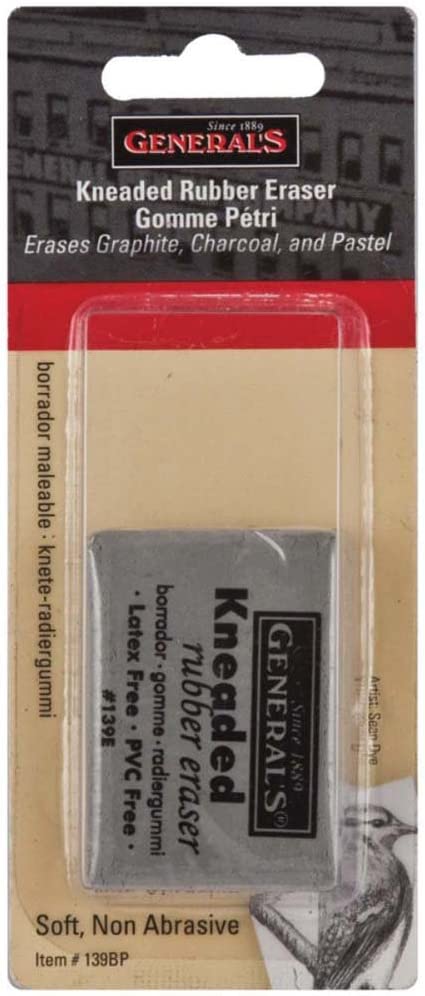
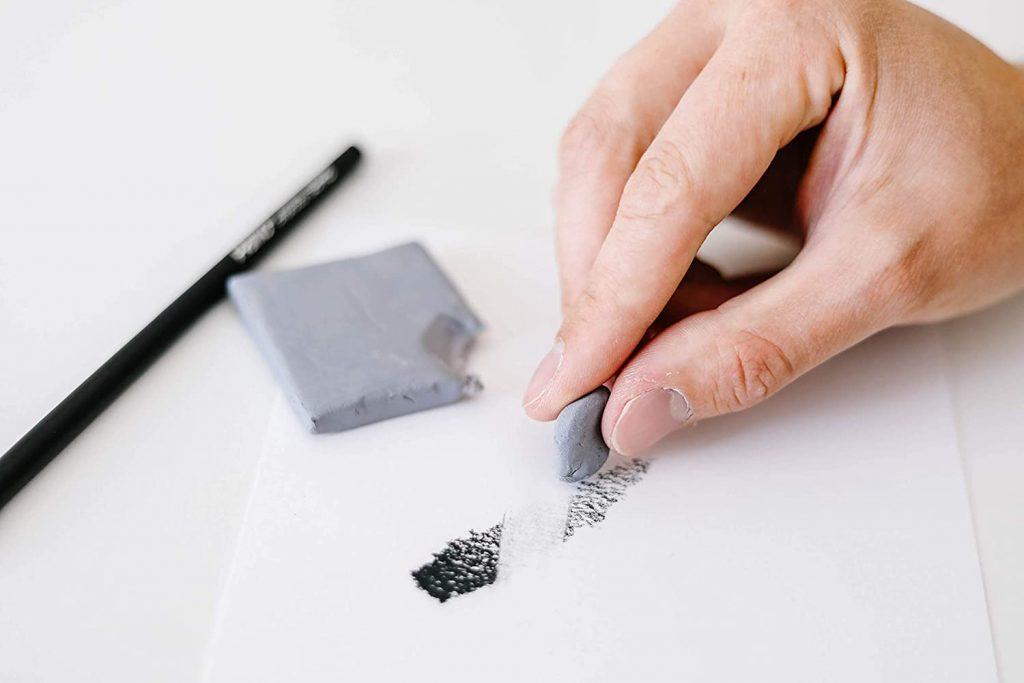
Kneaded erasers Are a small kind of fidget similar to modeling clay that allows students to play with it while listening to a lesson and even erase pencil or charcoal marks they might make during doodling. This way, their paper stays clean, but they are able to play with something that will silently distract their mind when they become overstimulated.
2. Stress Balls Filled with Sand
You can purchase sand-filled stress balls that can serve as a distracter for a few minutes and allow students with anxiety issues to find a release from their anxieties. This allows them to focus more on the primary task by reducing their anxiety levels.
3. Freddy’s Fidget Toys
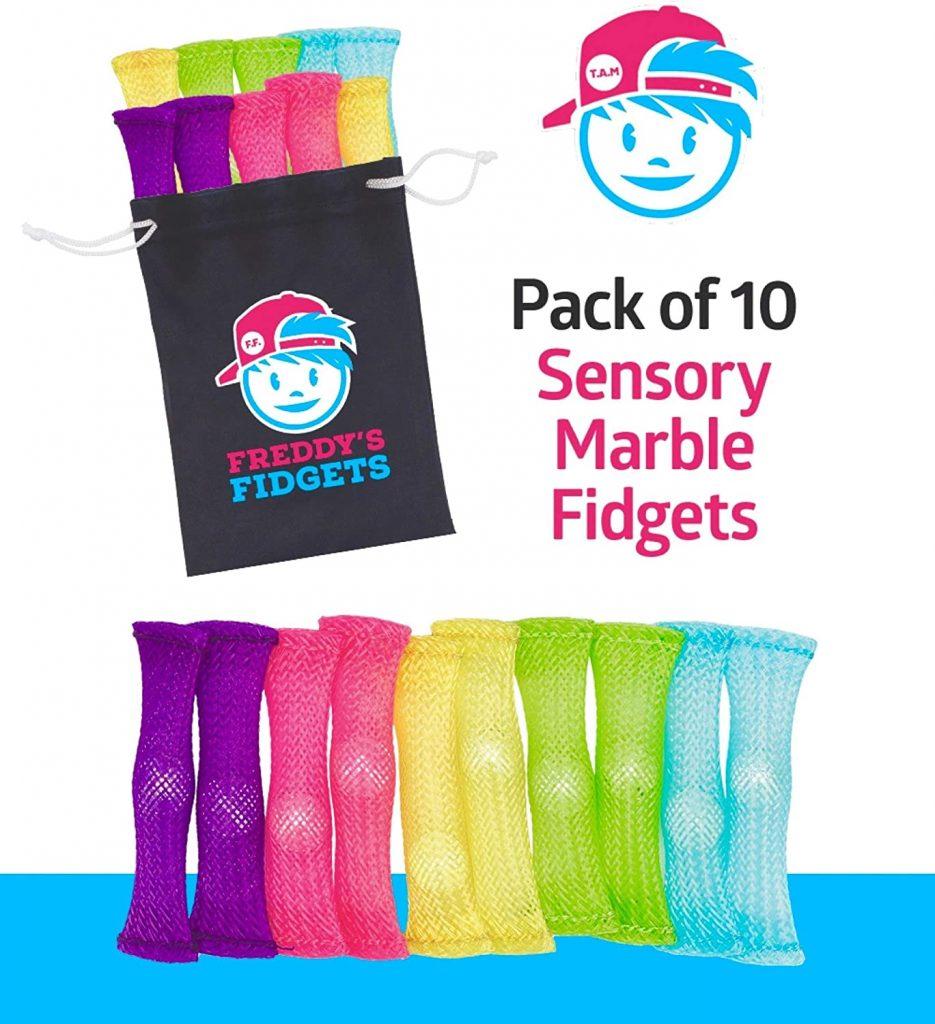
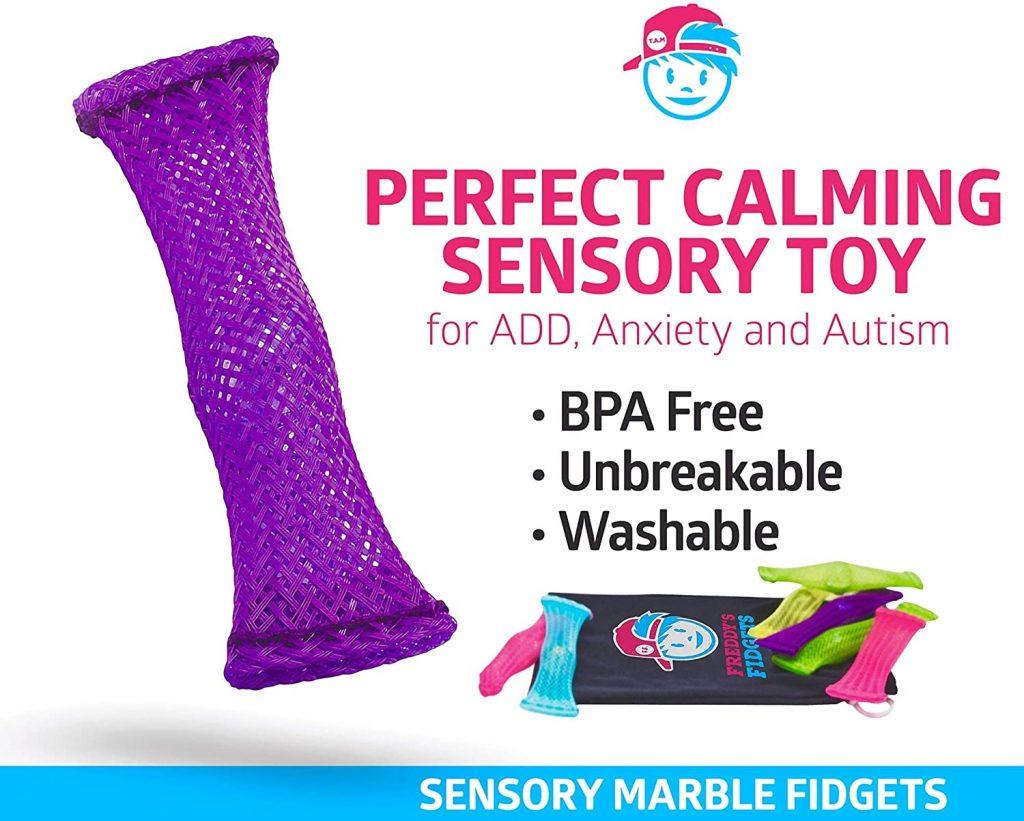
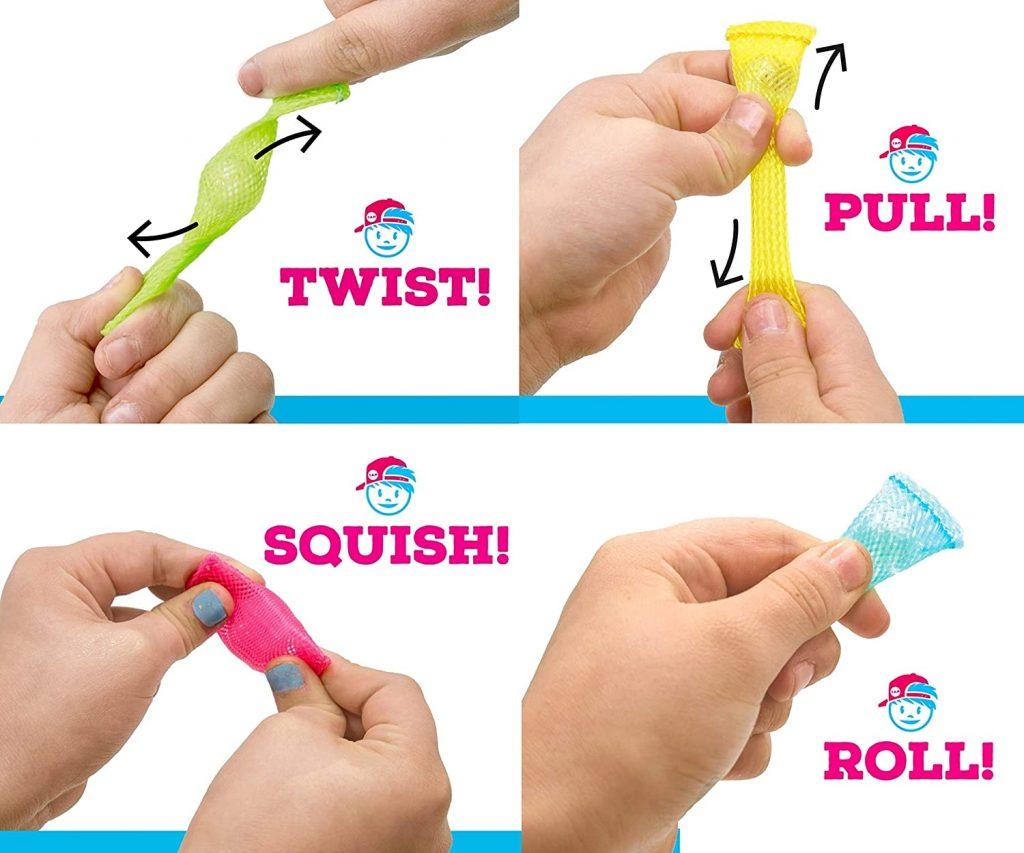
This Freddy’s Fidget Toys set includes 10 fidget toys in 5 different colors with a special carrying pouch.
Ten relaxing marble and mesh fidgets in five colors. includes a convenient storage and transportation soft microfiber pouch.
4. Tangle Toys
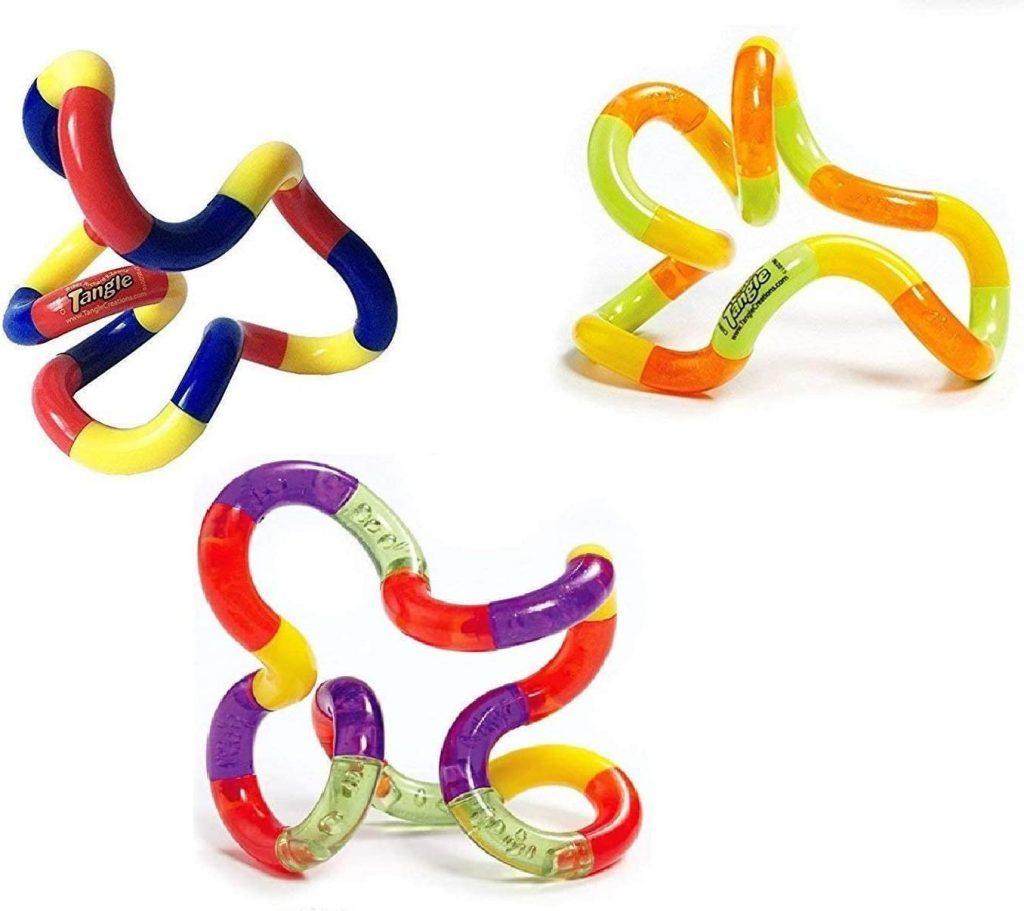
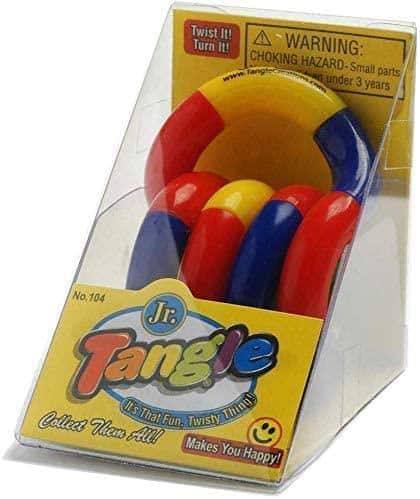
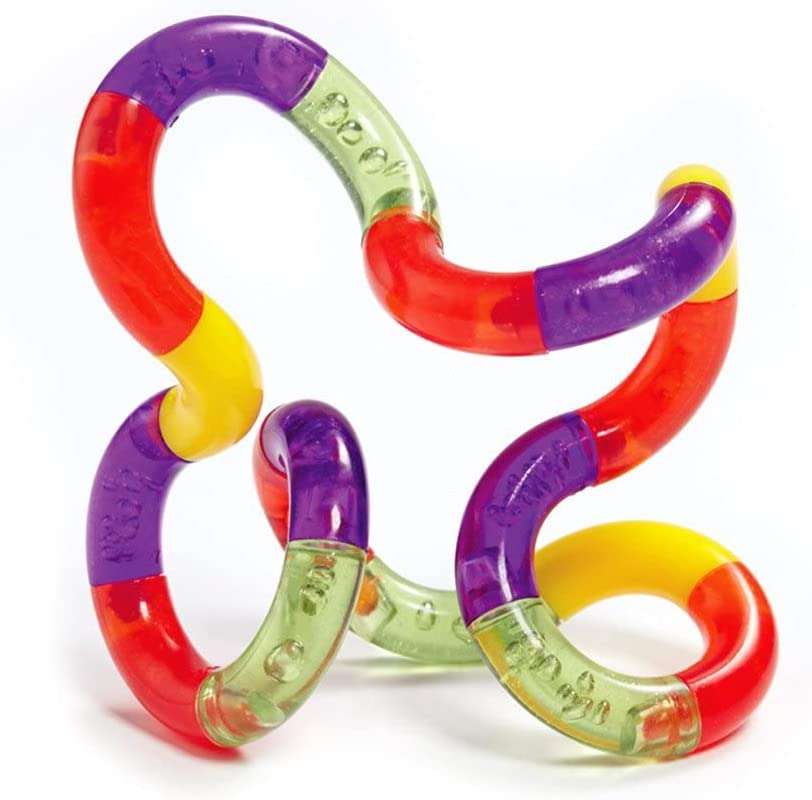
Tangle Toys are fidget toys that can be moved in a variety of different ways. They are usually made of soft plastic and are interloped with each other so that they can be moved in different directions. Some of these are called “Tangles.”
5. Moochi Squishies


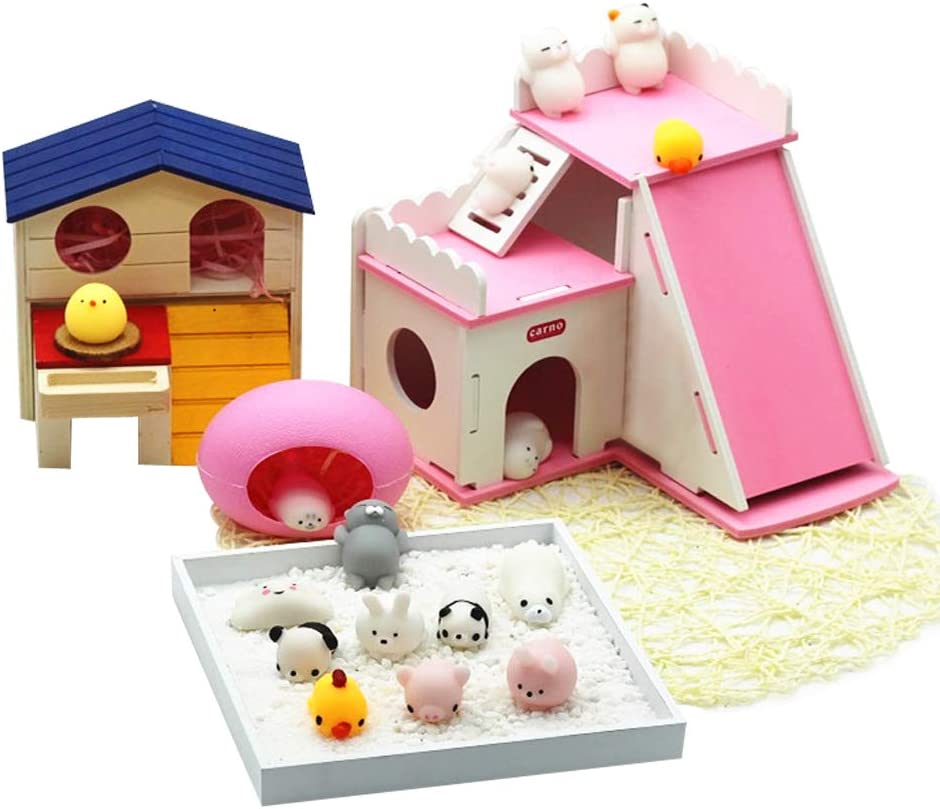
These toys are great for tactile-oriented people and kids love the gooey sensation they feel when playing with them. Moochi Squishies look unobtrusive and similar to a Pokemon character or cute little animal companion that can sit on a child’s desk without being distracting. Then the child can reach for it anytime they feel sensory overload and play with it until they feel like returning to the assignment. For kids who stress over assignments from time to time, this is a godsend.
6. Theraband Hand Exercisers
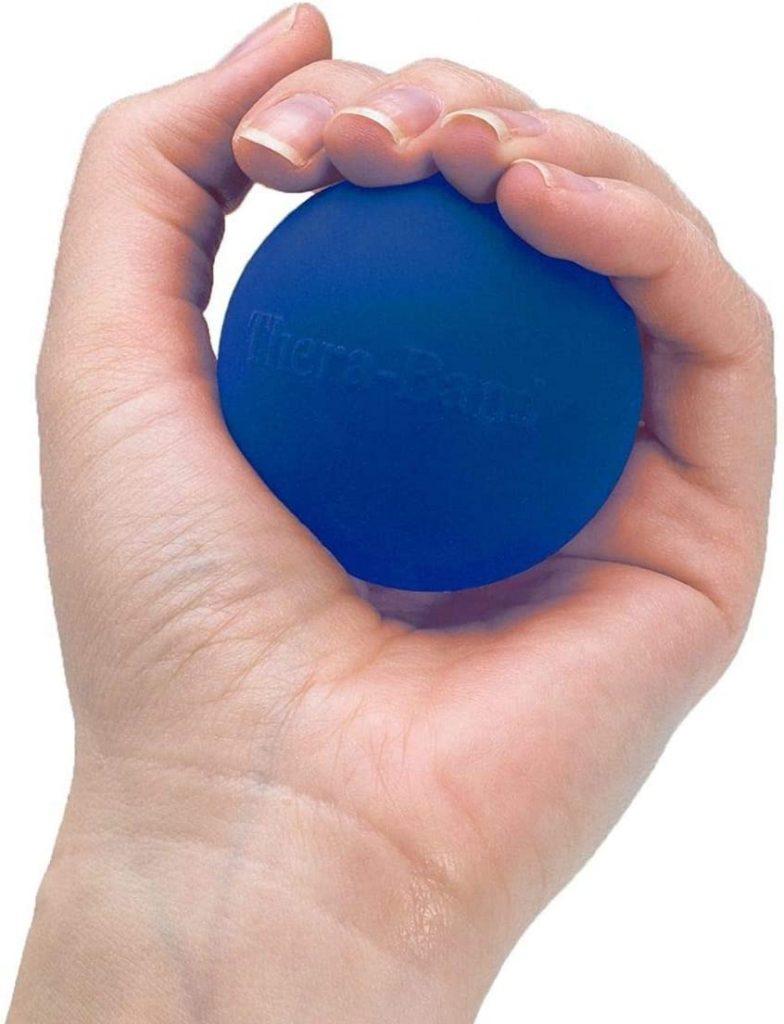
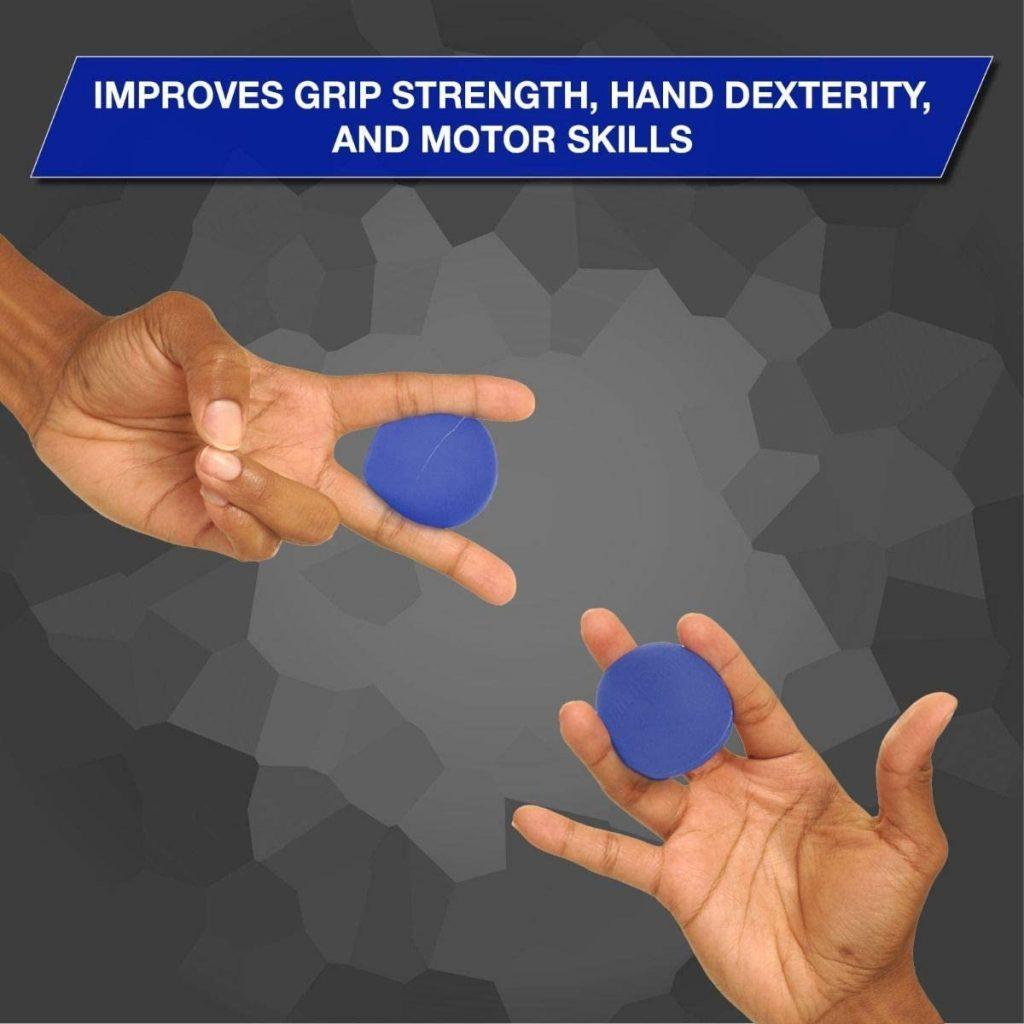

TheraBand hand exercisers help people recover from injury while in the hospital, but they also allow kids to do something constructive with their hands while in class. Many of these are gentle enough for kids and they have the added bonus of being able to be heated up or cooled also.
7. Wooden Massager
The Wooden massager fits easily in a child’s hand and the ball in the middle can be used to roll over sore feet or other muscles for a relaxing moment. For kids who get uptight and just need to unwind, this can prove to be a great one-minute or two massage that helps relax stressed muscles so that they can recover and go on with the rest of their day’s activities.
8. Appash Fidget Toys
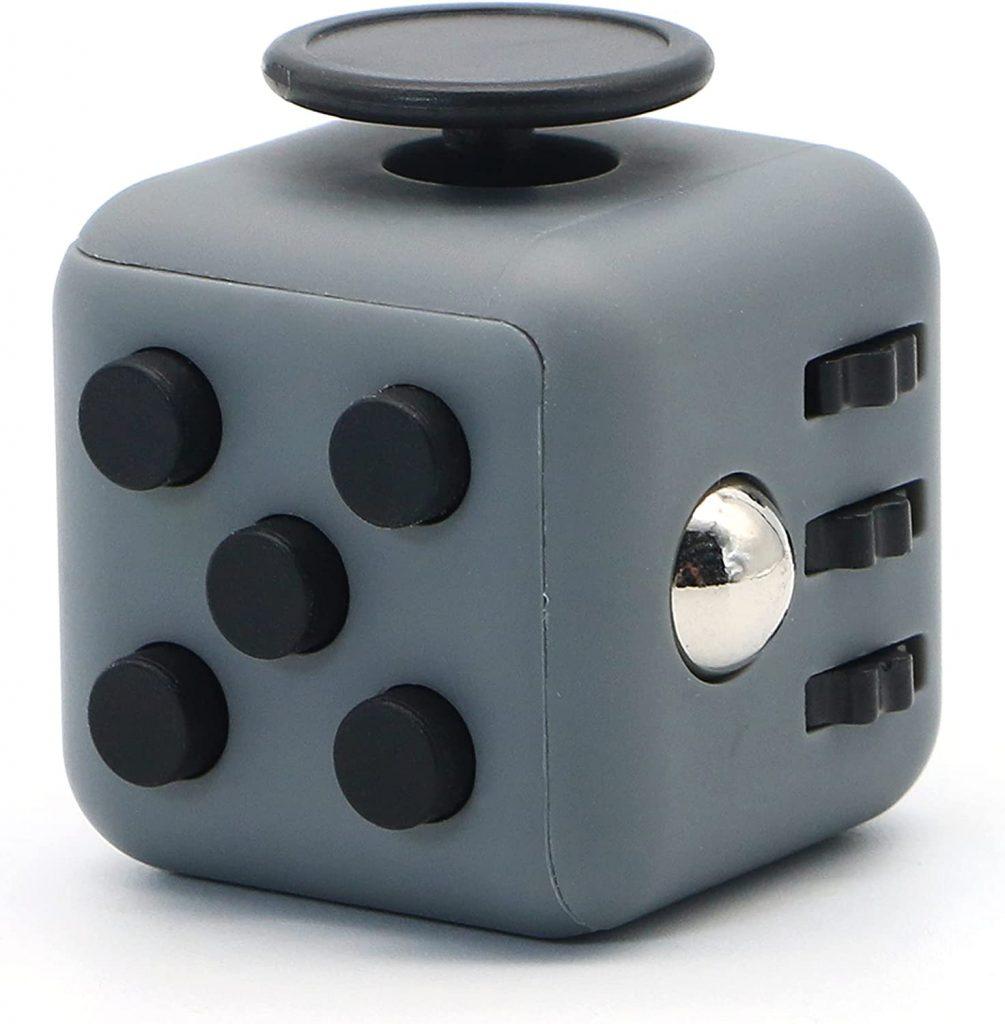
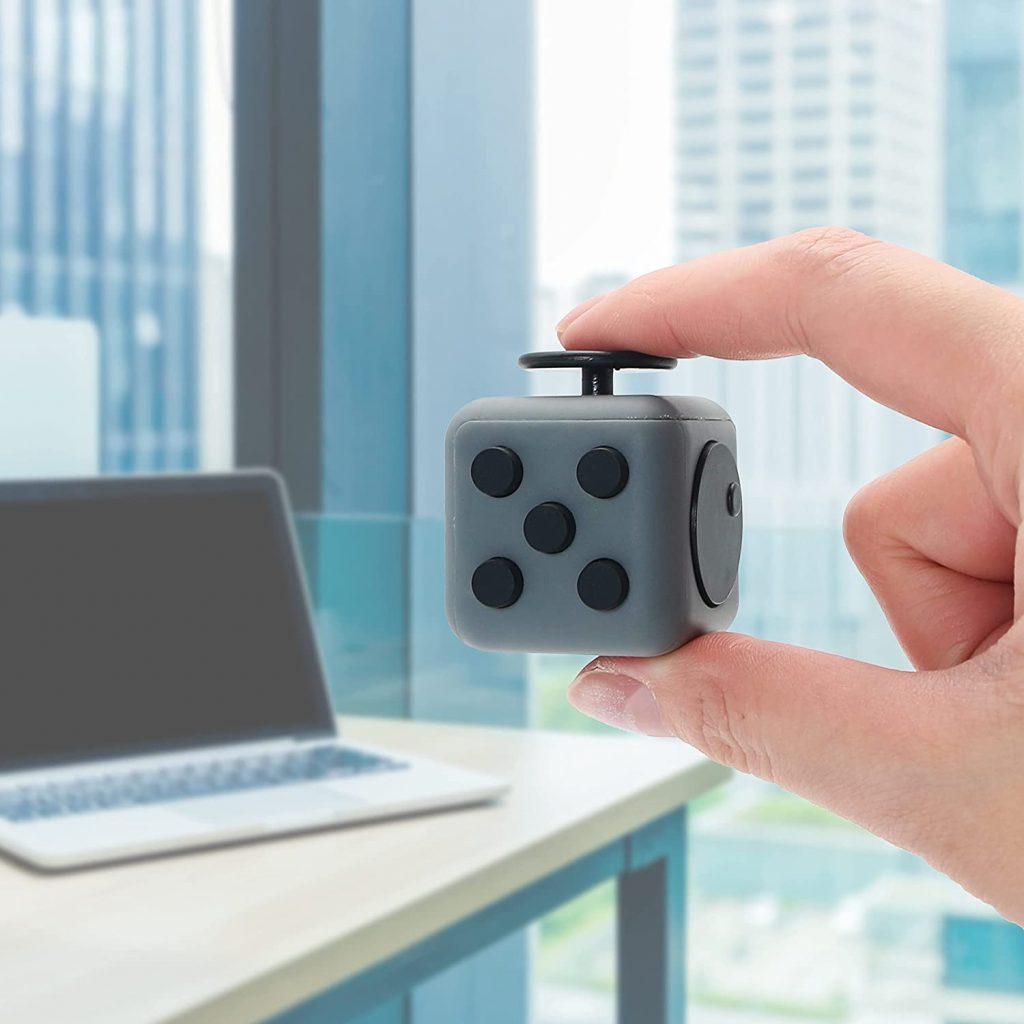
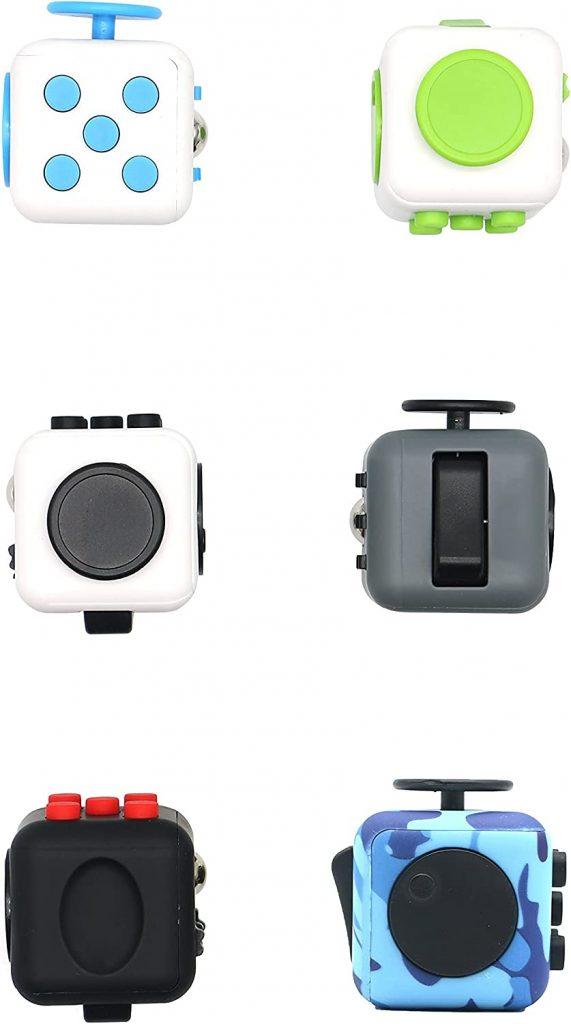
This unique Appash fidget toy is capable of keeping sensory-challenged kids busy for hours while also paying attention to a class lecture or assignment. They come in a wide variety of colors and feature several various interactive components. Some keys produce a slight sound so students should limit these to recess or free time, but otherwise, they are perfect for the classroom.
9. Brass Spinner
The Brass Spinner is a nifty gold metal spinner that allows you to turn the parts around in a circle or move the sections of it up and down. It would be a great one for boys who like to see how things work or who have an interest in mechanical interloping.
10. Metal Hammers
Metal Hammers are a tool that allow people to use independently but it also interlaces with the entire unit so that kids can exercise their hands while also paying attention to something else.
11. Stress Relief Popper
The stress relief popper lets kids push different colored bubbles down and watch them pop up again. This activity gives kids something to do with their fingers when they are bored from sitting still too long.
12. Massage Rings
Massage rings are “rings” that appear like an old-fashioned slinky for the fingers. You can wear them on various fingers several at a time. The sensory experience is fun and it might keep students who tend to fall asleep alert enough to hear the entire lesson.
13. Monkey Noodles
Monkey noodles are thin, squishy noodles that kids can hold in their hands and ‘squish’ them in all sorts of ways. These are great for kids who need to feel something tactile that they can manipulate when they are tired of just listening to the primary lessons.
14. Pop Tubes
Pop Tubes make a cool sound and also allow users to manipulate them in different arrangements. This would make a great group toy for kids during free time. It might not be quite as practical in the middle of class.
15. Emoji Fidget
Emoji fidgets let you play with a squishy animal and push it into all sorts of angles without busting (usually). Emoji fidgets also allow you to share and trade with friends so it can be used to encourage social interaction as well.

DIY Classroom Fidgets
Though we’ve offered several ideas as to how educators and parents can provide sensory stimulation for kids in class, it’s important to note that you do not have to buy them! You can make your own.
Below are the 7 Best DIY Fidget ideas for the classroom:
- Air Dry Clay– Dries automatically after use but can be restored in an air-tight bag to use again.
- Glitter in a Jar– Get glitter in different colors and add a small amount of water or clear glue. Let kids push it up and down the bag and manipulate the glitter from outside the bag.
- Therapy Dough– A type of homemade play-doh that allows you to dig your hands into it and feel the cool relaxing sensation.
- Craft Foam– Cut out different colors of foam and create crafts from them.
- Water-filled Small Balloons– Blow up a balloon only a small amount and then fill with water and push around in the balloon for a sensory treat.
- Bunny in a Bag– Create a billowy soft bunny with soft cotton then put it in a small bag to play with while listening to class lectures.
- Goldfish in a Bag– Use small rubber goldfish toys and place in a Ziploc bag, then fill with water. Make sure it is tight and that kids don’t hit it too hard or it could spill out the contents on the desk!
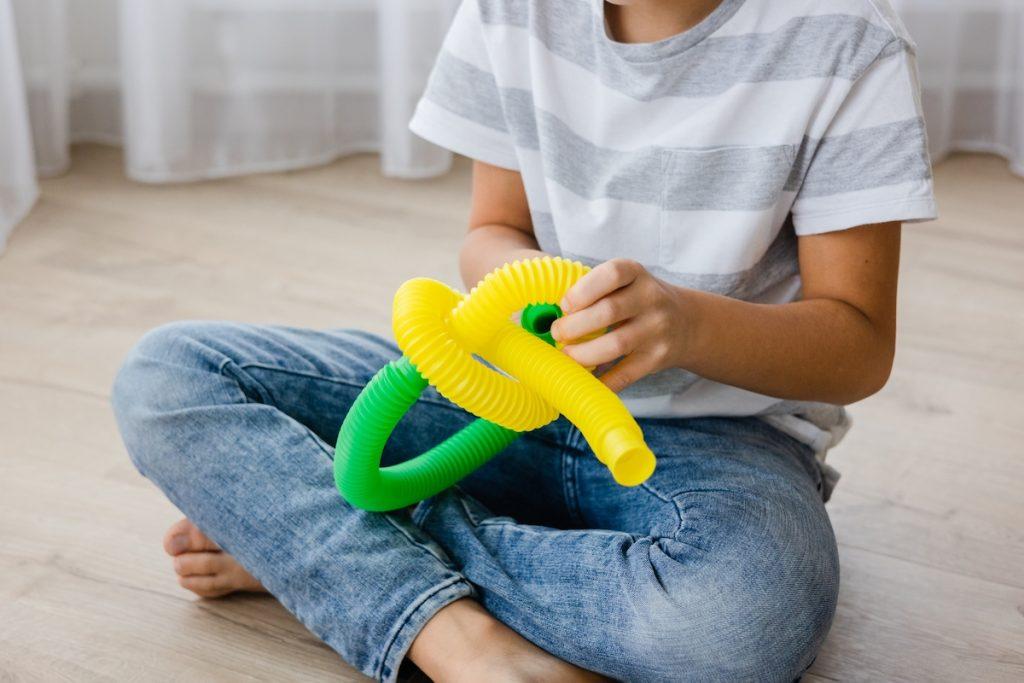
Tips and Best Practices for Utilizing Fidgets in the Classroom
It’s important to remember that classroom fidgets should be used only as needed in the classroom. If kids can learn to sit still and listen to a lesson without being anxious or upset, let them do so. But for those kids who need that extra sensory awareness during lectures, allow them to choose from a number of fidget toys to help them reduce anxiety and become more engaged in the class activities.
The following tips might help teachers to decide how to introduce and implement classroom fidgets without disrupting the class in general.
Tip 1
This can overstimulate your entire class and you could completely lose their attention on the day you do this. Instead, allow individual students to choose a fidget toy when you notice they are experiencing anxiety or uneasiness. Ask them to return the toy when they feel they can handle things without it.
Tip 2
Make sure the toys you use will not be distracting to other students.
Tip 3
Have a rule that noisy toys only be used during recess or free time.
Tip 4
Do not allow the making of crafts during a serious lesson from the teacher. The brain is able to use sensory toys even while listening to a lesson, but it is harder to divide their attention between a craft (such as the foam pieces) and the class lecture without losing a lot of information in the process.
Tip 5
Remind students to use the fidget toy as quietly as possible and to avoid talking about them or showing other students.
Final Thoughts
Adapting to the special needs of students and providing ways to bridge the gap with diverse learners is paramount to getting all learners involved in the educational process with a high level of success. With so many resources to choose from that we have shown you in this article, teachers should be ready to try out what works best for their students. Let students try out different fidget tools to see what makes them happy. Once you find something that works, let the student keep it in a certain place where only they can access it then put it back as they leave class. With a little extra effort and resources, you can lead your students to open doors that, until now, were closed for them.
